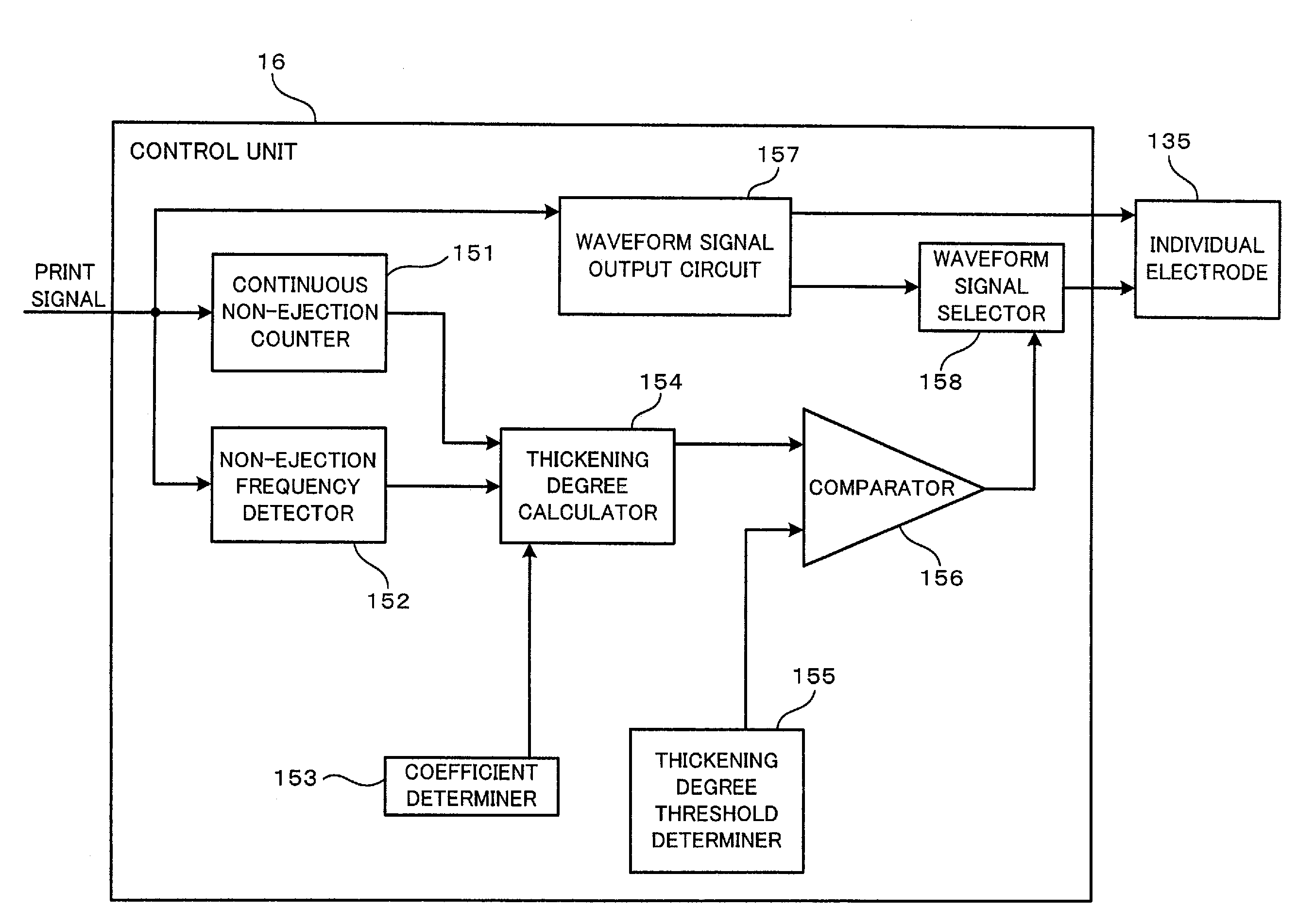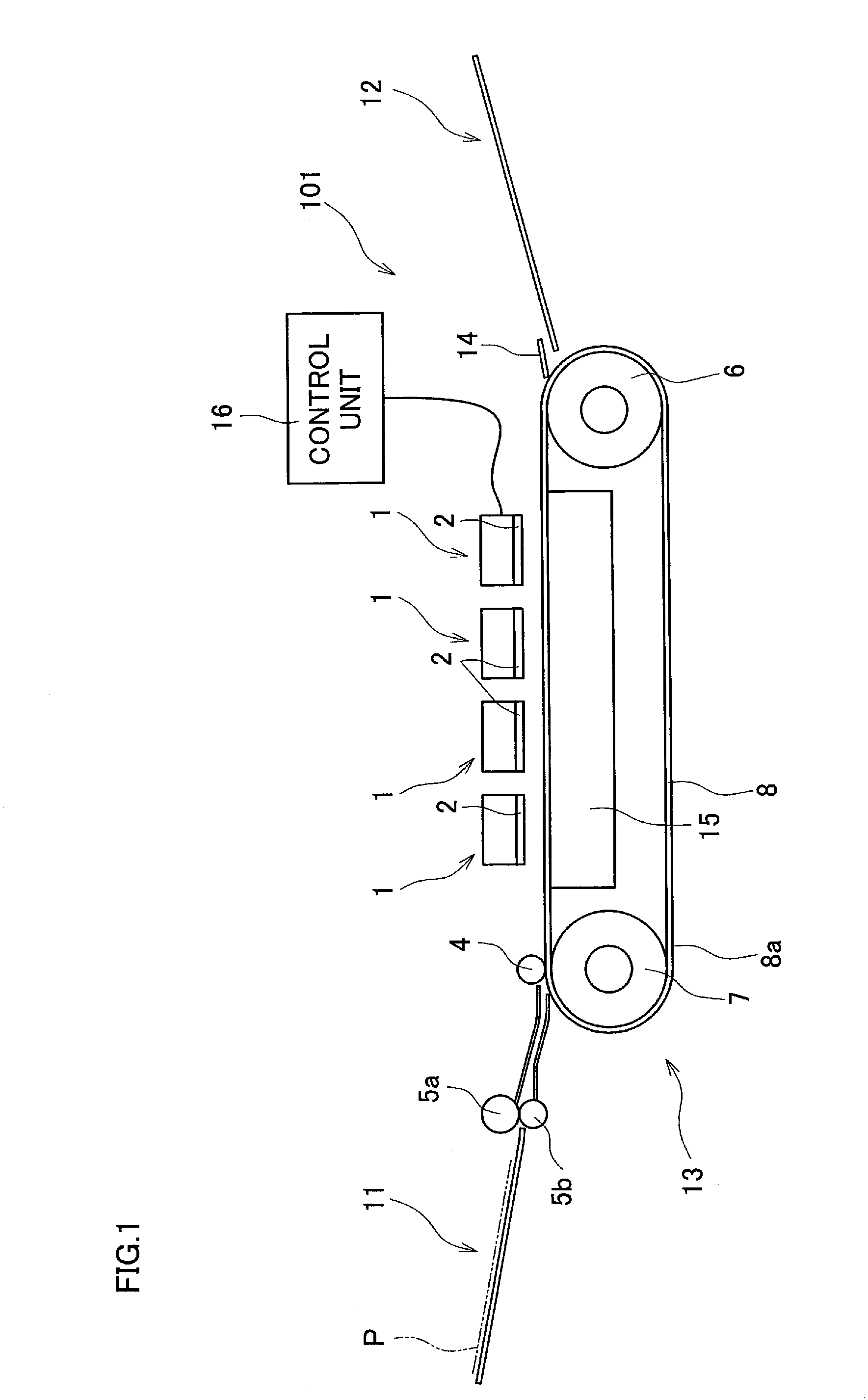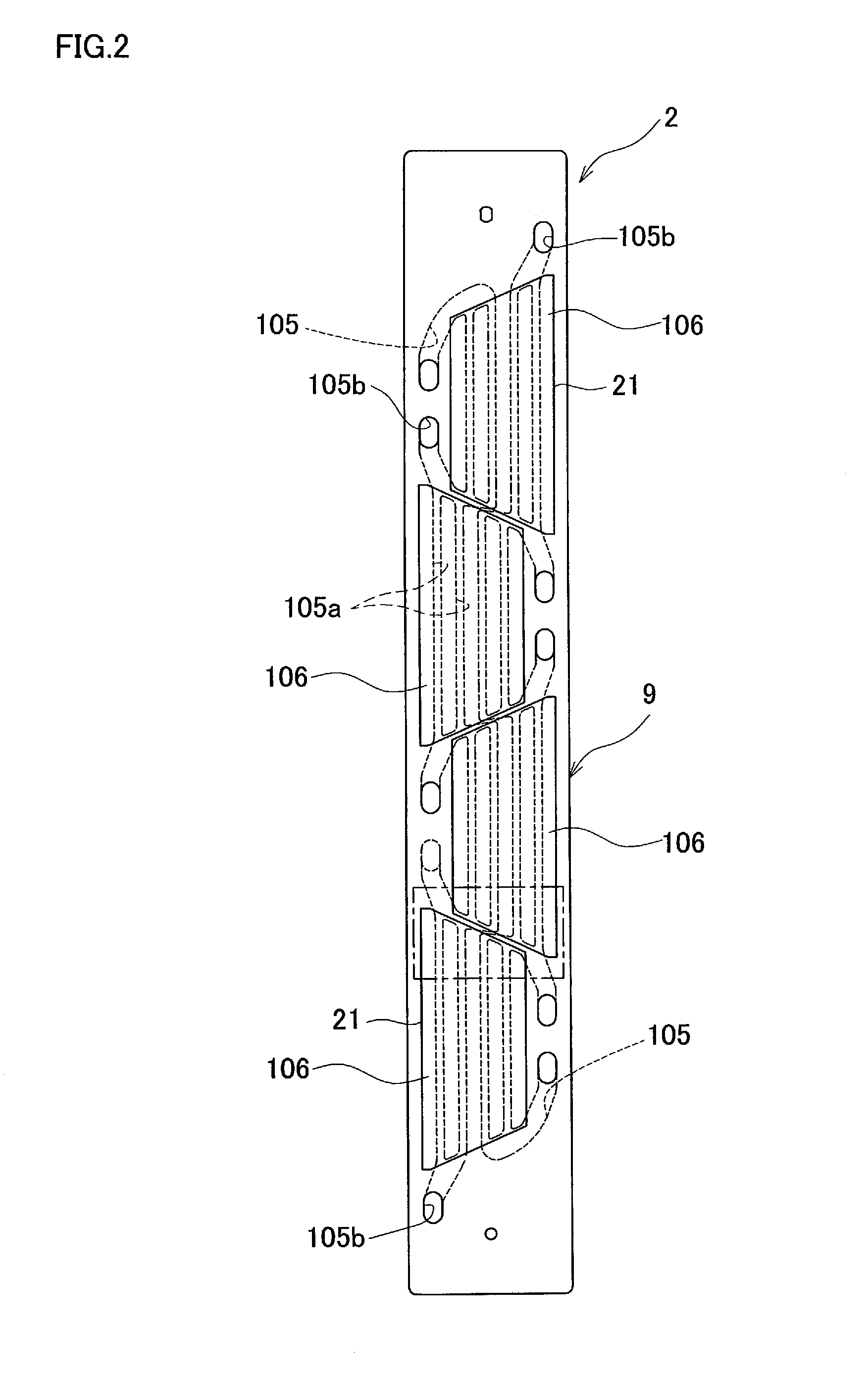Ink-jet recording apparatus
a recording apparatus and inkjet technology, applied in the direction of typewriters, printing, inking apparatus, etc., can solve the problems of deteriorating ink ejection performance, ejection failure, and thickening of ink contained in a nozzle less often used in printing operations, so as to improve the quality of an image recorded on a recording medium, the effect of deteriorating the ejection performan
- Summary
- Abstract
- Description
- Claims
- Application Information
AI Technical Summary
Benefits of technology
Problems solved by technology
Method used
Image
Examples
first embodiment
[0033]FIG. 1 illustrates a general construction of a printer, which is an ink-jet recording apparatus, according to the present invention. As shown in FIG. 1, a printer 101 is a line-type ink-jet printer having four ink-jet heads 1 arranged side by side in a horizontal direction in FIG. 1. The ink-jet printer 101 includes a paper feed unit 11, a paper discharge unit 12, and a paper conveyor 13, which are shown in left, right, and middle parts of FIG. 1, respectively. In the printer 101, the control unit 16 controls operations of the ink-jet heads 1.
[0034]Recording papers P, which are recording media for a printing to be performed thereon, are disposed in the paper feed unit 11. In performing a printing, the recording papers P are one by one conveyed rightward in FIG. 1 by a pair of paper feed rollers 5a and 5b. The paper conveyor 13 has two feed rollers 6 and 7, and also has an endless conveyor belt 8 wound on the feed rollers 6 and 7. As the feed rollers 6 and 7 rotate, the conveyo...
second embodiment
[0086]In the first and second embodiment, the first coefficient W1 and the second coefficient W2 are determined based on a temperature of the ink-jet head 1, a kind of ink ejected from the nozzle 108, and a manufacture characteristic value for the ink-jet head 1. However, a first coefficient and a second coefficient may be determined based on only some of them.
[0087]In addition, in the first and second embodiment, the arithmetic operation performed by the thickening degree calculator 154 for calculating a thickening degree includes a calculation of multiplying a non-ejection frequency detection value by the first coefficient W1 and a calculation of multiplying a continuous non-ejection number by the second coefficient W2. However, a thickening degree may be calculated by an arithmetic operation including only one of the calculations. Alternatively, an arithmetic operation performed for calculating a thickening degree may include neither of the calculations, and a thickening degree m...
PUM
 Login to View More
Login to View More Abstract
Description
Claims
Application Information
 Login to View More
Login to View More - R&D
- Intellectual Property
- Life Sciences
- Materials
- Tech Scout
- Unparalleled Data Quality
- Higher Quality Content
- 60% Fewer Hallucinations
Browse by: Latest US Patents, China's latest patents, Technical Efficacy Thesaurus, Application Domain, Technology Topic, Popular Technical Reports.
© 2025 PatSnap. All rights reserved.Legal|Privacy policy|Modern Slavery Act Transparency Statement|Sitemap|About US| Contact US: help@patsnap.com



